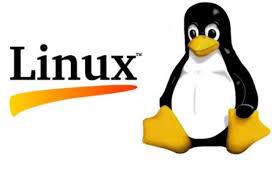
Linux is a Unix-like and mostly POSIX-compliant computer operating system assembled under the model of free and open-source software development and distribution.
The defining component of Linux is the Linux kernel, an operating system kernel first released on 5 October 1991 by Linus Torvalds.The Free Software Foundation uses the name GNU/Linux to describe the operating system, which has led to some controversy.
Linux was originally developed as a free operating system for Intel x86–based personal computers, but has since been ported to more computer hardware platforms than any other operating system. It is the leading operating system on servers and other big iron systems such as mainframe computers and supercomputers, but is used on only around 1.5% of desktop computers. Linux also runs on embedded systems, which are devices whose operating system is typically built into the firmware and is highly tailored to the system; this includes mobile phones, tablet computers, network routers, facility automation controls, televisions and video game consoles. Android, the most widely used operating system for tablets and smartphones, is built on top of the Linux kernel.
The development of Linux is one of the most prominent examples of free and open-source software collaboration. The underlying source code may be used, modified, and distributed—commercially or non-commercially—by anyone under licenses such as the GNU General Public License. Typically, Linux is packaged in a form known as a Linux distribution, for both desktop and server use. Some popular mainstream Linux distributions include Debian, Ubuntu, Linux Mint, Fedora, openSUSE, Arch Linux, and the commercial Red Hat Enterprise Linux and SUSE Linux Enterprise Server. Linux distributions include the Linux kernel, supporting utilities and libraries and usually a large amount of application software to fulfill the distribution's intended use.
Distributions oriented toward desktop use typically include X11, a Wayland implementation or Mir as the windowing system, and an accompanying desktop environment such as GNOME or the KDE Software Compilation. Some of such distributions may include a less resource intensive desktop such as LXDE or Xfce, for use on older or less powerful computers. Distributions intended to run on servers may omit all graphical environments from the standard install, and instead include other software to set up and operate a solution stack such as LAMP. Because Linux is freely redistributable, anyone may create a distribution for any intended use.
ITJobs is founded in 2014 in Vietnam and the primary goal is grow to one of the leading specialists in recruitment and selection of IT staff in Asia.


